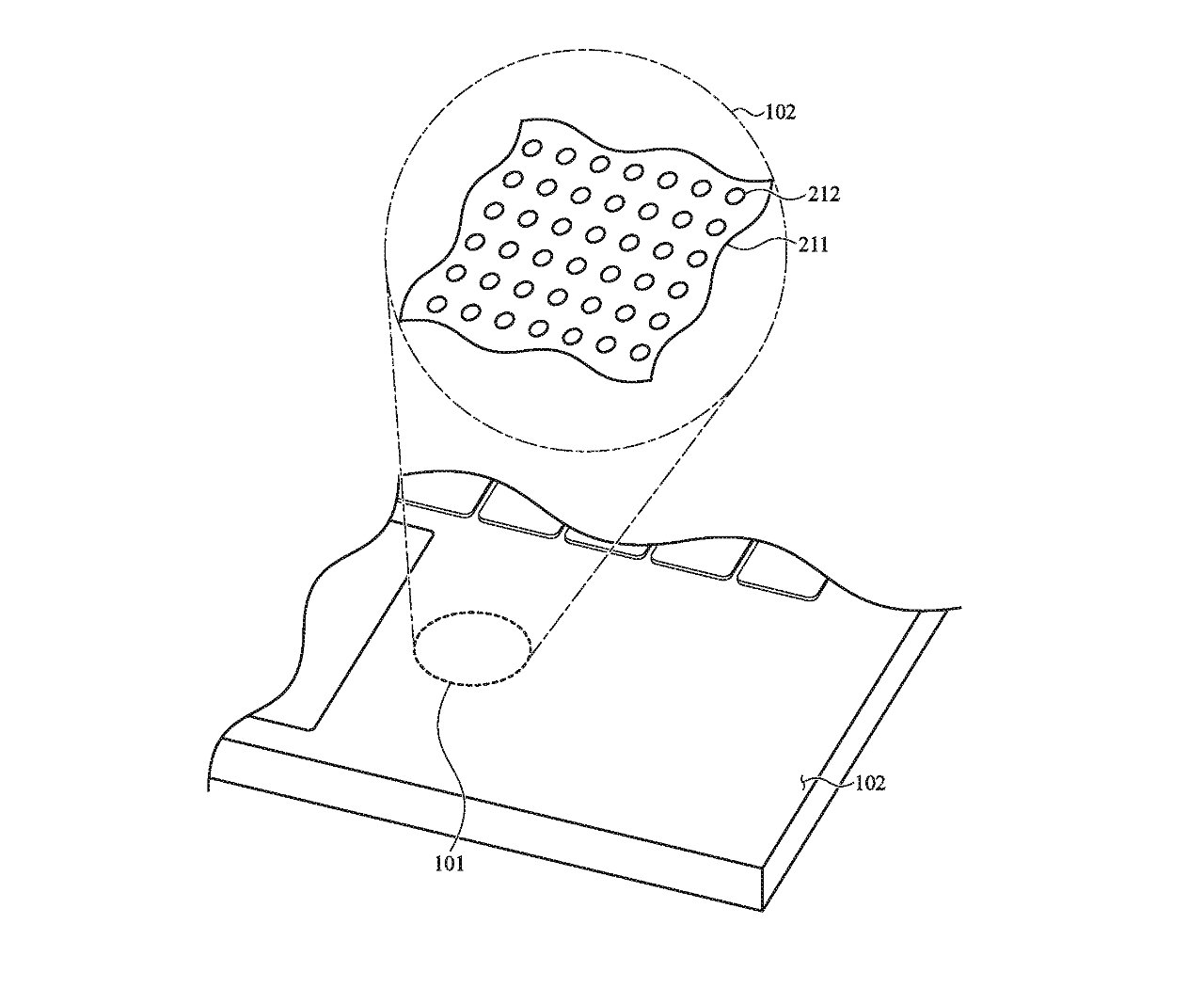Similar technology to the sensors in the Apple Watch may come to the
MacBook Pro, with Apple researching how to add biometric monitoring to the palm rest surface.
Apple already has one biometric sensor on the MacBook Pro in the form of the
Touch ID button. Now it's looking to expand the use of that from straight identification and into health-related features.
"Portable electronic device having an integrated bio-sensor," is a
newly-revealed patent that is concerned with how to incorporate sensors into a laptop. While the technology described could go in several spots on a MacBook Pro, the patent's drawings show the sensor as a single area under the right hand palm rest.
"Many traditional portable electronic devices are configured to receive input using a keyboard or similar input device," says the patent. "However, few, if any, traditional notebook computers include sophisticated sensors or sensing techniques to monitor the user."
Apple's proposal is to integrate "a bio-sensor into a surface of a portable electronic device." According to the descriptions, the resulting MacBook Pro should look no different from now, until a user rests their palm on the right hand side as they type.
"The electronic device includes an opaque layer positioned on a translucent layer that defines micro-perforations," continues the patent. "[The] array of micro-perforations are configured to obscure the light source and the light receiver when the bio-sensor is not in operation."
"A light source transmits light or other optical energy through the micro-perforations into a body part of a user," says Apple. Then a "light receiver receives the light that is reflected back" and information "about the user's body is determined from the light."
This is just how the health sensors in the Apple Watch work, and this means the MacBook Pro could gain any of the abilities of the Watch.
"[The] bio-sensor is positioned along a side of the keyboard and the body part is a palm of a hand of the user," continues Apple. "[The] light source [could be] a green LED, the bio-sensor is configured to detect blood perfusion in the body part of the user and the health metric is at least one of a heart rate, a respiration rate, a blood oxygenation level, a blood volume estimate, or a blood pressure."
Apple alternatively suggests that an infrared LED might be used instead, in which case "the bio-sensor is configured to detect water content of the body part of the user. "
The patent is chiefly concerned with how any sensors could be fitted in this way, rather than necessarily about the specific benefits it could bring. So it concentrates on the substrates that can be used, the materials.
Plus there is the extra concern that, unlike with the Watch, the light sources in the sensors would be pointing up at the user. The plan is to do that by using proximity detectors to sense when a user's palm is covering the sensor, whether or not it is yet pressing down on it.
"To prevent the light in the visible spectrum from being noticed by the user," continues the patent, "the electronic device may first operate the bio-sensor in a proximity-sensing mode to detect the body part of the user as the infrared light may not be visually discernible to the user."

"Once the electronic device determines that the bio-sensor is covered by the body part of the user 110, [it] may then cause the bio-sensor to operate in a health-sensing mode using visible light," concludes Apple.
Despite the focus being on health monitoring, Apple's patent does also recognize that there could be other uses for the technology. Specifically, it could be used to augment the MacBook Pro's sensing of ambient light conditions, and so altering the brightness of its screen.
Similarly, if the sensors do not detect the user's palm for a certain amount of time, that can contribute to the device concluding it isn't being used. This could be another factor in Apple's plans to have battery-powered devices power down when you look away.
The patent is credited to two inventors, Qiliang Xu, and Richard G. Huizar. Their previous related work together includes a proposal to make MacBook Pro trackpads larger — and be
backlit













